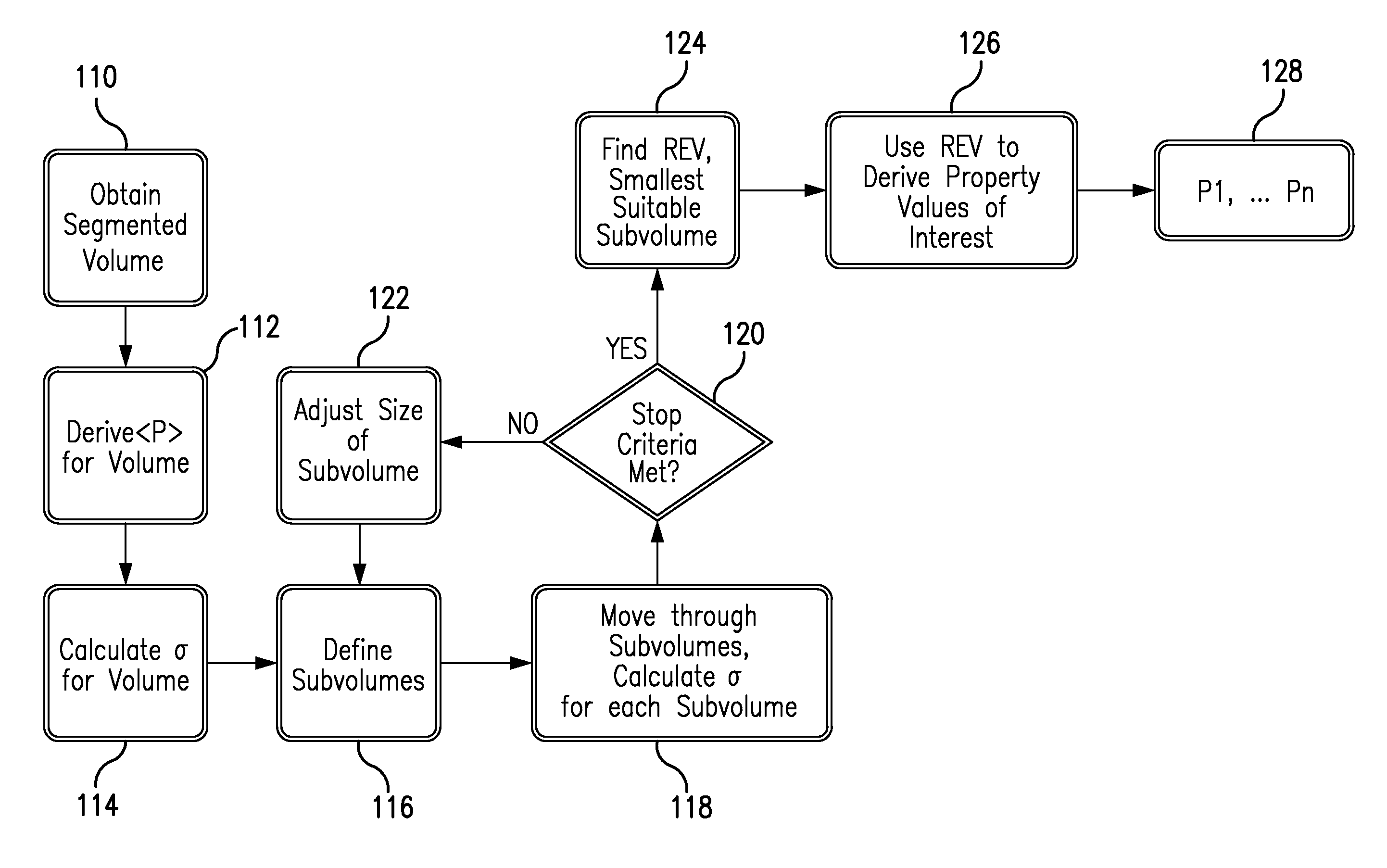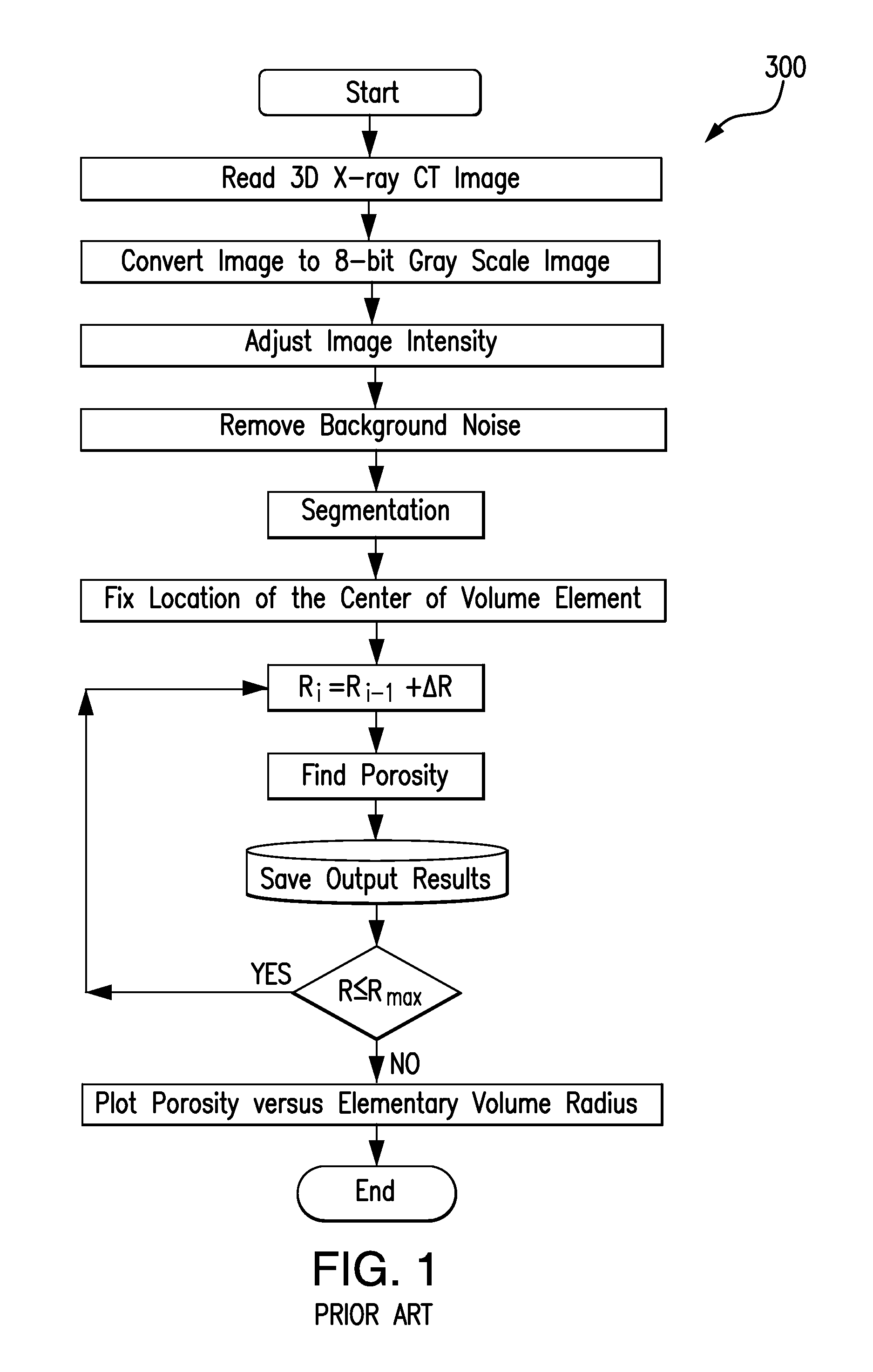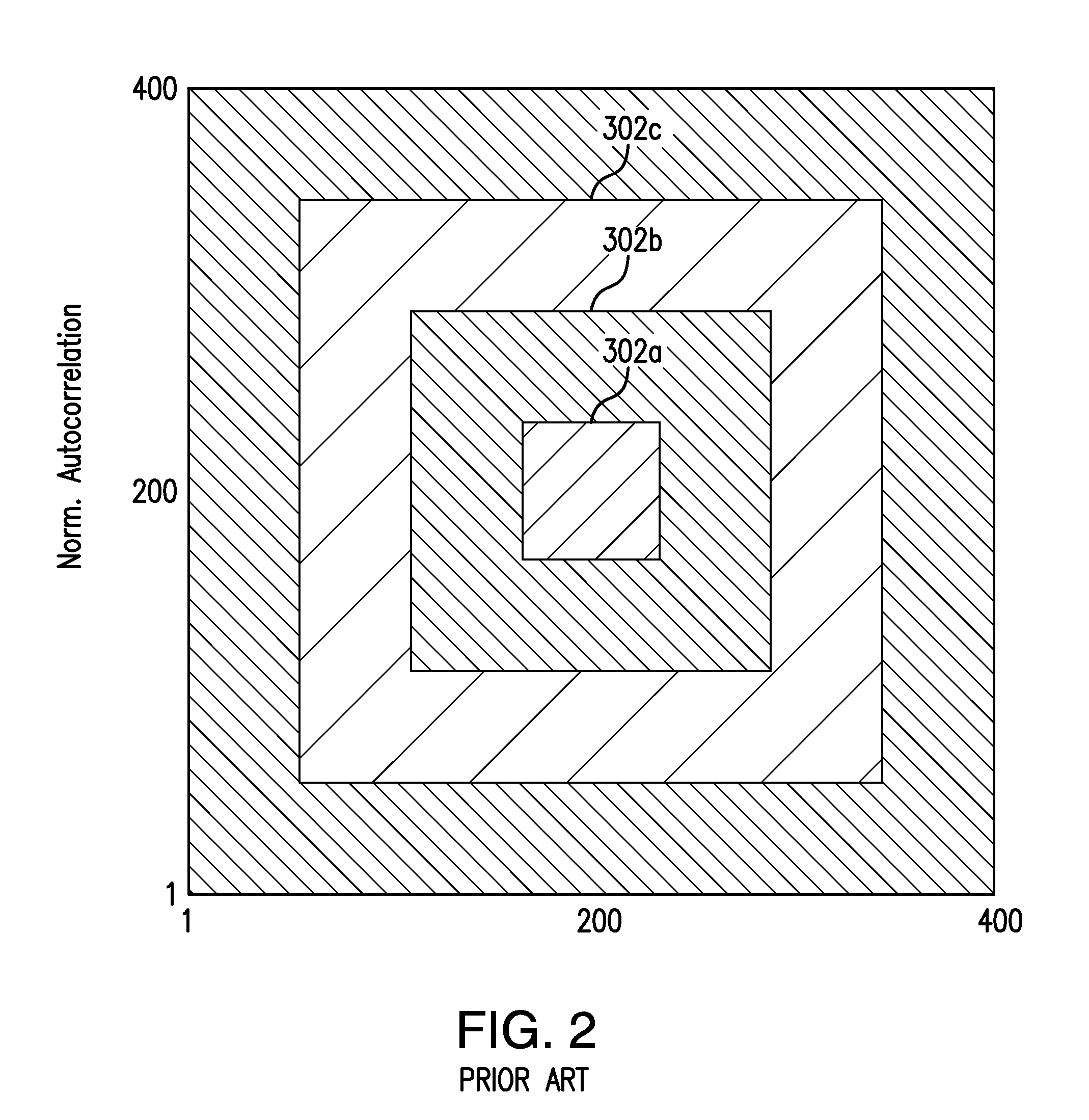Efficient Method For Selecting Representative Elementary Volume In Digital Representations Of Porous Media
a technology of elementary volume and digital representation, applied in the field of methods and systems, can solve the problems of subjective and highly variable approach, sample size, and large size of porous media
- Summary
- Abstract
- Description
- Claims
- Application Information
AI Technical Summary
Benefits of technology
Problems solved by technology
Method used
Image
Examples
Embodiment Construction
[0075]The present invention relates in part to an efficient method to estimate a representative elementary volume (REV) in a sample of porous media, such as rock, wherein the sub-volume selected is a better approximation of the elementary volume than provided by existing methods.
[0076]The present invention also relates in part to a method for characterizing a porous sample such as a reservoir rock by using a smaller subsample that has the same or very similar selected characteristics and variation of selected characteristics in the direction of expected fluid flow through the sample. If samples are too large, they can compromise the memory of the computer and excessive computer time may be required to complete calculations. Therefore, the present invention relates in part to a method of picking REV for subsampling that will be representative of the entire sample so computation time can be decreased and computer memory is not compromised. The REV has a sample size and a specific loca...
PUM
 Login to View More
Login to View More Abstract
Description
Claims
Application Information
 Login to View More
Login to View More - R&D
- Intellectual Property
- Life Sciences
- Materials
- Tech Scout
- Unparalleled Data Quality
- Higher Quality Content
- 60% Fewer Hallucinations
Browse by: Latest US Patents, China's latest patents, Technical Efficacy Thesaurus, Application Domain, Technology Topic, Popular Technical Reports.
© 2025 PatSnap. All rights reserved.Legal|Privacy policy|Modern Slavery Act Transparency Statement|Sitemap|About US| Contact US: help@patsnap.com



